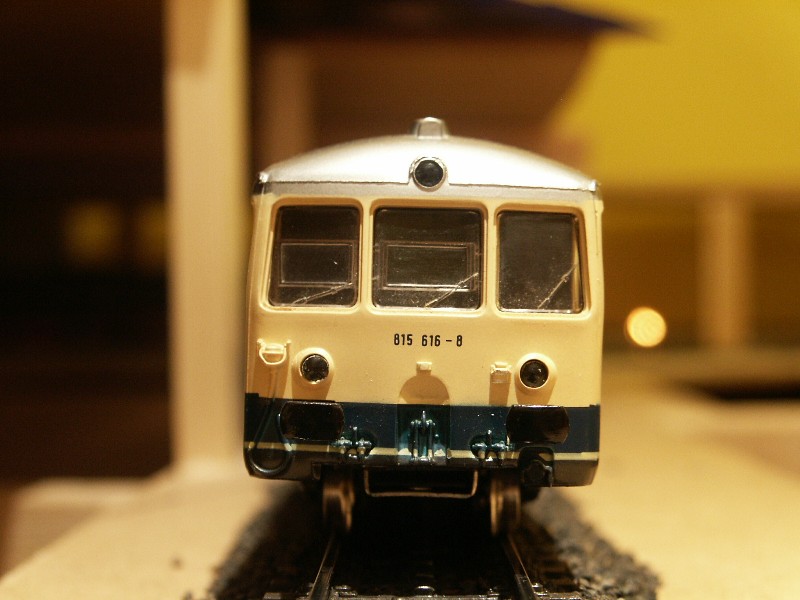Here we have another project on my 4131 / 4132 4-axle Umbauwagens. These are already equipped with close couplings in NEM pockets, but the coupler mechanisms are not made for the parts in the standard 72020 / 72021 kits. So we need to find a different way of getting the current from the couplers to the lighting.
The idea is to use the existing mechanism with a wire soldered directly to the copper tongue of the couplers. The wire then goes up through a small hole in the mechanism and then along a groove in the top.

Using a set of tweezers, we remove the coupler mechanism from the coach by unclipping the thin spring wire that is attached to the underside of the coach and runs between the bogie and the frame. There is no need to remove it completely; I just unclip it from the small hook on the mechanism itself. Also remove the existing short coupler from the coupler pocket. This coupler is no longer needed as it will be replaced with the current conducting version.
Next, we drill a small hole through the piece from bottom to top. The hole is best drilled from the bottom, through the cylindrical shape to the rear of the coupler pocket.
I used a 0.7mm drill – this was large enough to take the decoder wire that I had available.


Once the hole is drilled and tested for size, the wire is removed again. Using a junior hacksaw and a triangular file, we then make a groove in the top of the part, deep enough to accommodate the wire so that it would not show when viewed from the side. This is a gradual process as we don’t want to remove too much material and weaken the part unneccessarily.

The next step is to solder the wire to the current conducting coupling. Then we feed it through the coupler pocket, install the coupling and pull the wire all the way through.

The wire is then glued into the groove that was cut into the holder previously. Then the whole things is reinstalled into the frame. Rather than running an extra wire between the couplers, we can use the metal base plate of the coach to get the current from one end to the other. To do this, we remove some of the coating for better conductivity and solder the end of the wire from each coupling to the plate.

It’s important to leave a little extra length to allow for the free movement of the coupler.

The copper wheel contacts for the return feed were originally designed to touch the base plate. Now that the plate is used for the current from the centre studs instead, we must shorten the two vertical tabs, otherwise we will have a short circuit. We then need to solder a wire to the copper and feed it through the centre bogie pivot and up to our light strip.

Note: the little spring wire that is used to return the couplers to the centre position is rather weak. Therefore, the couplers will be a little less free moving after this conversion. This is OK for me because I will always run the coaches as a fixed consist, and the first and last coaches only have the conducting couplers at one end.
Related post: tail lights
